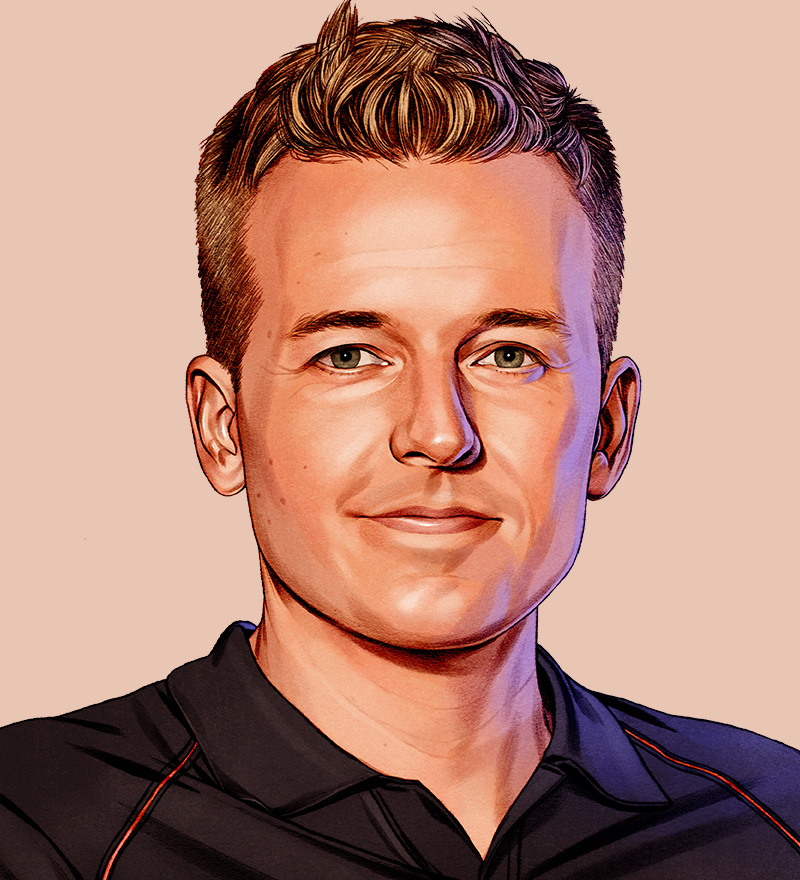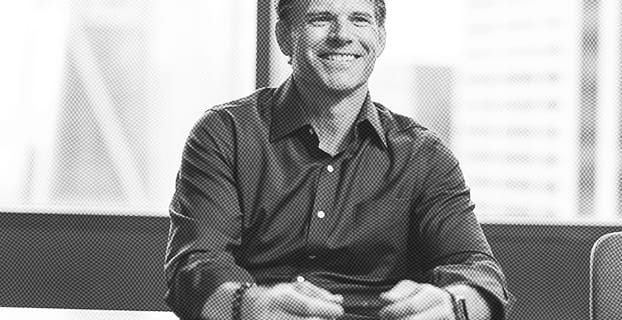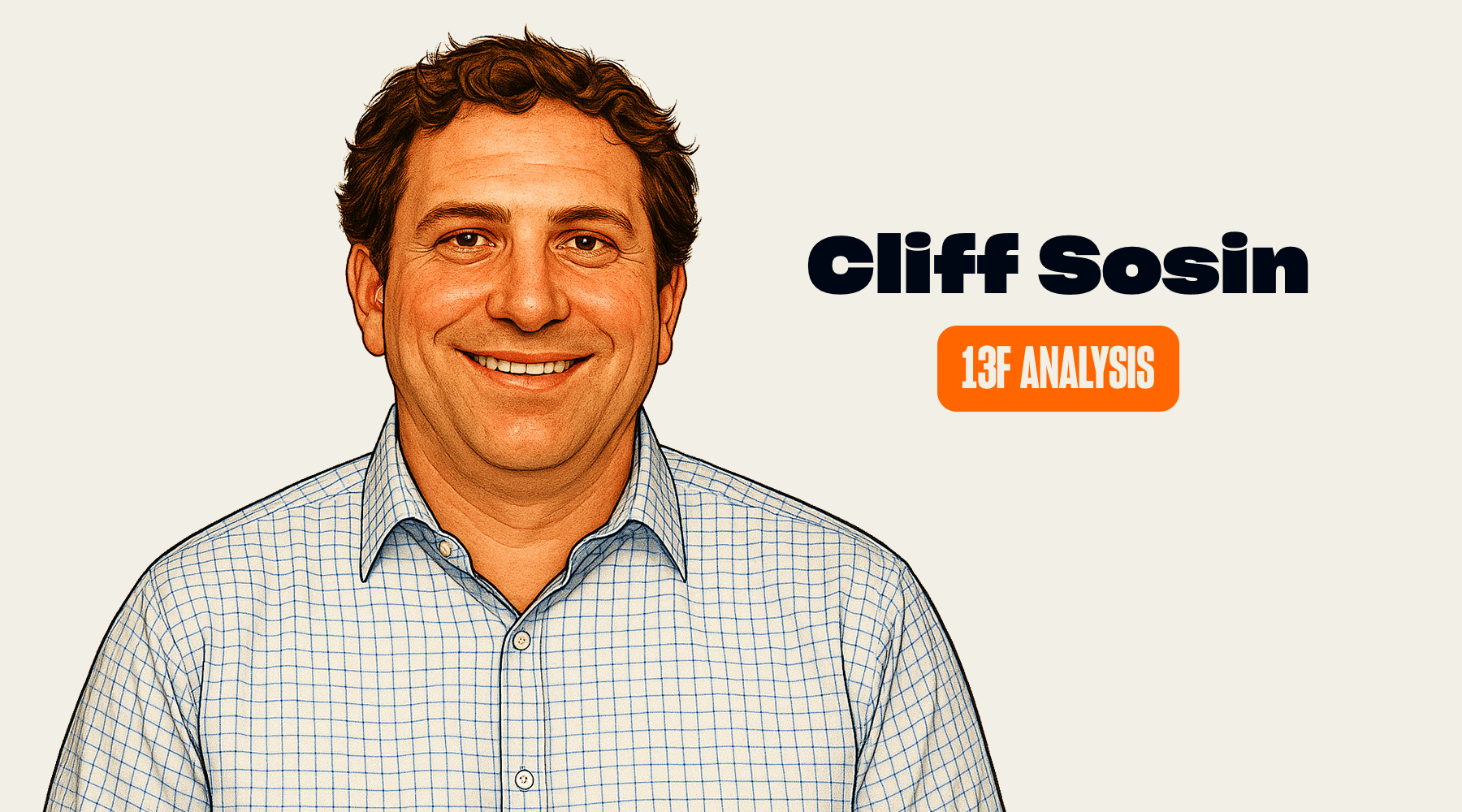In 2008, Alpine was struggling. They invested the last dollars from their third fund just 10 days before Lehman Brothers declared bankruptcy, and the subsequent fallout meant they wouldn’t be able to raise another fund for several years. Around this time, they hired an executive coach, and Alpine brought on a consulting and coaching firm for their employees. With the help of these coaches, they unlocked three critical elements — their psychology, their timeframe, and their imagination. Shifting their mindset in these three areas allowed them to achieve results beyond anything they imagined.
What follows is a summary of that process from a speech Graham Weaver gave at Alpine Investors’ 2022 Growth Summit.
Graham Weaver's Talk
I want to do a quick thought experiment before telling you what we're going to do for the rest of the day.
What's your limiting factor for 2023? It's coming up on November and you're going to make your budget for 2023. Everyone's answer could be different. How many of you said something around hiring talent? How about customer acquisition? Getting the right number of customers? Sales? Marketing? How about your TAM? Add-on acquisitions?
Generally speaking, something is holding you back. Now, imagine that you have 10 years to solve that one problem, and you and your team are going to spend 25% of all your energy solving that one thing.
Let's say your problem was hiring enough trained technicians. Let’s say you have 10 years and an infinite amount of money, and your team is going to spend 20% to 30% of your time solving that one problem.
Could you solve it? Of course you could. You build a school: You get the best instructors in the world, and you have 10 years so students can get all the way through the program. You could build the best program – and that bottleneck is eliminated.
Then what’s your limiting factor 10 years from now? You can solve anything that you set your mind to with your team, your energy and your imagination.
The answer is, it's your psychology: It’s how you think about your world, your business and yourself. It's your imagination: your ability to imagine a world that doesn't exist. And it's your timeframe: Are you actually going to give yourself 10 years?
Are you going to work on problems today that are going to pay off in 10 years? In the business world, those three things – psychology, imagination, and timeframe – are the limiting factors. Like life, business is an internal game.
In 2001, we started Alpine. The same year, a transformative book, “Good To Great,” was published.
Jim Collins took good companies that were doing well, and then they became great. I think we need a sequel to “Good To Great” because we're already great. The sequel is “Great to the Best in the World.”
“Best in the world” isn't something you put on a website and never talk about again. You're going to define what “best in the world” means to you, and you're going to be two standard deviations better than the second-best person. And you're going to have a way to know if you hit that goal.
This isn't one of those situations where you're going to hear an exciting speech and then you go back to the office Tuesday, return emails and nothing happens. We're actually going to move your business forward and give you tools to keep that going afterward.
Psychology, imagination and timeframe are fun buzzwords, but I'm going to make them tangible.
Psychology
We took Alpine down to the studs, started over and rebuilt it.
“Blue Ocean Strategy,” by Renee Mauborgne and W. Chan Kim, describes red oceans and blue oceans. Red oceans are: You're doing what everyone else is doing. Blue oceans are: You're in a totally different world. We transformed from a red ocean to a blue ocean because we had to, because of the Great Recession.
We got help through executive coaching. Coaches ask, “What do you want?”
In 2010, I remember thinking I didn’t want to continue fighting and not get anywhere. I wondered what I was doing with my career.
I remember thinking, “Am I allowed to really say what I want?” All of a sudden, there was a flood of limiting beliefs and doubts. Thankfully, with the help of coaching, we overcame some of these limiting beliefs and answered, “We want to be the best firm ever to exist in private equity.”
If we’re going to spend half our waking lives doing something, then we’re going to be the best in the world. It took us a year to be able to say that.
We also decided we want to be a place where the best people come to work; and we want to be a force for social good. We started writing it everywhere.
Give yourself permission to say what you want without worrying about how you're going to do it.
It had to do with us believing it, because one of the limiting beliefs was, “We’re condemned to what we did in the past.” But a funny thing happened when we started to believe it. We started to show up to meetings that way. We started to hire people who were going to help us get there. We started to attract people who wanted to be part of the best firm in the world. Our identity started changing and we started to become the best firm in the world.
So, what does best in the world mean to you? If you don't get there today, put two hours on the calendar with your executive team every week until you have something that you're excited about, because it's going to be very hard to hit a target like that. It's very hard to hit a target, but it's impossible to hit a target if you don't set it.
Imagination
In 1971, Southwest Airlines was losing money on the two routes they operated between Dallas and San Antonio, and between Dallas and Houston. Other airlines didn't like Southwest because they were offering low fares, and that was scary. They didn't want Southwest to survive. So, on those two routes, these airlines dropped the rates dramatically to $15 a flight. They would make Southwest go out of business because other airlines could make money on the other 49 routes they ran. So, Southwest is getting their ass kicked and they're going to go out of business.
They put an X on one metric. Southwest became the best airline in the world with one and only one metric. Gate turnaround time. There are a thousand things you do as an airline – customer service, catering, bag check – and they said, “We're going to be the best in the world at one thing: gate turnaround time.” At the time, gate turnaround time was 65 to 70 minutes. You had to deboard people, change the catering, load the bags (which were coming from 12 different airlines because you had a hub-and-spoke model). That took a while. Then you have to board people, and everyone had an assigned seat. Herb Kelleher had no idea how to do 10 minutes when he said that. They had no idea how to do it, but the how is the killer of all great dreams.
They had no catering and no assigned seats. They lined people up to get on the plane. It's not a great boarding experience, but it's a 10-minute turnaround. They didn’t do hub-and-spoke models, so they didn't have to screw around with all the bags.
They started hitting 10 minutes and then they could fly 14 routes with one plane in one day while their competitors were doing four or five. And they started making money at $15 per route.
The competitors started getting out of those routes, and Southwest started expanding. From 1972 to 2002, Southwest was the No. 1 performing stock in the world. They made more money than all the other airlines combined.
There's probably 50 things going on in your business, but to be the best in the world, you actually only need to pick one or two levers to be the best in the world.
Try to imagine a world where you're going to put an X on two parts and separate yourself two to three standard deviations from the next-best person. That's enough to be the best in the world.
Timeframe
Psychology, imagination and timeframe are all superpowers. Any one of them by themselves is a superpower. But if you put all three together, you will be the best in the world.
The opposite of timeframe is: You show up on Monday, you have 250 emails in your inbox and you have a standard list of meetings. During those meetings, you fight fires. You have some more meetings, you return some more emails. You go home, you're exhausted, you have dinner, you turn in for the evening, and then you wake up and do it again.
That's your default operating system. That's why everyone isn't the best in the world. A calendar notification pops up that says, “Figure out where to put two X’s.” You have two hours blocked with your executive team because I told you to do that. Then that time actually comes two weeks from now and you have 250 emails to return. You’ll do it later, right?
You think, “I could really use that two hours for my emails or for this meeting or this employee just left and we’ve got to have a meeting.” That's the opposite of timeframe, meaning you're prioritizing the urgent over the important. It’s hard to overcome that.
You're going to work 50 hours a week, so that's five hours a week, which is a lot of time. If you spend five hours a week working on your business, you will become the best in the world. It's about five hours a week longer than anyone else is spending doing that.
When we started doing this at Alpine, we were spending 20% of our time – a full day out of the office every single week – working on our business. It was during the recession, when we had a lot of urgent stuff.
We still spent one day a week outside the office. That's where all of Alpine’s innovations started.
All of us are sitting in the shade of oak trees we planted 10 years ago, and we need to start planting the trees now that will give us shade for the next 10 years. Timeframe is putting time on your calendar today to do things that are going to make you awesome years from now.
No. 1: Be clear about what “best in the world” means to you. Answer that question and then communicate that to your team.
No. 2: Work on the business and use your imagination. Your imagination is the greatest asset that you and your company have, and it's the most underutilized. If you unlock that, it's magical. Commit to five hours a week to work on your business, and put X's on one or two parts of your business in which you're going to be the best in the world.
No. 3: Pull those priorities into today. Make the important become urgent by using your calendar to do it.
First, we have to give ourselves permission and realize we're enough. We have to realize that we're deserving of these goals we want to set.
If you're not the best in the world at what you're doing, who is?
Browse more of history's greatest speeches →
Three Practices
In 2008, Alpine was struggling. We invested the last dollars from our third fund just 10 days before Lehman Brothers declared bankruptcy, and the subsequent fallout meant we wouldn’t be able to raise another fund for several years.
Around this time, I hired an executive coach, and Alpine brought on a consulting and coaching firm for our employees. With the help of these coaches, we unlocked three critical elements — our psychology, our timeframe and our imagination.
Shifting our mindset in these three areas allowed us to achieve results beyond anything we imagined. What follows is a summary of that process.
1. Change Your Psychology
I have talked to an executive coach nearly every week for the past 14 years. The first question coaches help you answer is, “What do you want?” It sounds elementary, but I have found that most people (and organizations) don’t know the answer — and few take the time to find it.
Investing the time to answer this question is the first step to building a world-class company, as well as creating the life you want. While there are many ways to answer this question, I think the most powerful follow-up question is: “What would you dare to do, have or be if you knew you would not fail?”
We came up with three answers to this question at Alpine. We would dare to:
- Be the best-performing private equity firm in the world;
- Be the place where the best people want to work and spend their careers; and
- Be a force for social good.
It took months for us to crystalize these three points. When we began writing potential answers, our minds immediately flooded with thoughts such as:
“Who are we to think we can achieve such lofty goals?”
“Look at all the ways we’ve failed before.”
“We have no idea ‘how’ to achieve any of these goals.”
But with the help of our coaches, we started to identify those thoughts as limiting beliefs, and we slowly began working through them. Once we aligned on our goals, we wrote them down and communicated them internally. Then we started telling people outside of the organization what we were planning. And in doing so, an interesting thing happened: Our team started to behave as though we were capable of achieving those goals.
If you want to be the best in the world, start by clearly defining what that means to you and your organization. Then, communicate that goal simply, clearly and frequently.
2. Lengthen Your Timeframe
“The best time to plant a tree is 20 years ago. The second-best time is now.” – Chinese proverb
Most of us suffer from the tyranny of the urgent. A typical day might include a morning commute while fighting traffic, a series of in-person meetings sprinkled with a few Zoom meetings, lunch, returning emails, checking social media, a few more meetings, another gnarly commute home, returning more emails, and binge-watching Netflix while scrolling the internet to “decompress.” That is an exhausting day filled with lots of stimuli.
Following that pattern — day after day, year after year — will ensure that we do today what we did yesterday and do tomorrow what we did today. Living in the tyranny of the urgent, most executives spend their energy fighting what feel like pressing problems – a churning customer, a difficult employee, or some other crisis.
Becoming the best in the world requires rethinking how we spend our time. The simplest way to do this is to start allocating at least 10 percent of our time to working “on our business.” In Alpine’s case, working “on” the business meant engaging in activities to improve our company over the long run, while working “in” our business meant evaluating investments, closing deals and serving on boards.
Starting in 2010, our leadership team spent an entire day per week outside the office, thinking about Alpine’s future and designing programs that would make us successful three, five and 10 years in the future. This process was not easy. Some days felt messy, some felt like we were going backward and others felt like we were wasting time. Moreover, spending this much time out of the office during the Great Recession — when everyone around us was even more keenly focused on urgent tasks — required enormous patience, discipline and conviction.
During these sessions, we asked questions like:
- What assumptions are we making about “the way business must be done” that are holding us back?
- What would need to be true if we wanted to review every software firm that is for sale?
- If we could double the EBITDA of an add-on acquisition consistently, how would we go about that process?
- If we were to attract the best undergraduates or MBA candidates to work at Alpine, what would that experience need to look like?
Importantly, we did not know the answers to any of these questions. Finding them required dedicating time to thinking about the answers — and even more time and resources to bring the answers to life. We formed hypotheses and tested them using the formula Jim Collins outlined in his book, “How the Mighty Fall”: First fire bullets, then cannonballs. Try many things on a small scale. And once you prove they work? Back up the truck.
If you want to be the best in the world, you need to spend time planting trees today that will provide shade in the future.
“If you want to be the best in the world, you need to spend time planting trees today that will provide shade in the future.”
3. Unleash Your Imagination
Bertrand Russell once said, “Most people would rather die than think. Many do.”
Perhaps the single most underutilized asset in our businesses is the imagination of our people. When we stop to “think,” it is often reactive, responding to crises and problems (playing defense) rather than proactively carving out time for activities that will help us win in the future (playing offense). Once we have lengthened our timeframe and devoted at least 10 percent of our time to working on the business, we need to unleash the collective imagination of our team.
If a company is to become the best in the world at something, it doesn’t need to be the best in the world at everything. Instead, leaders need to get out a Sharpie and mark one or two critical elements in the company’s core practices with a giant X. Then they need to focus on that X, becoming one or two standard deviations better than the competition in that single area. Answering “What is your X?” is a great way to start harnessing your team’s imagination.
Southwest’s “X”
In 1972 — after finally winning several lawsuits brought on by its competitors — Southwest Airlines was down to its last few dollars in the bank. The company sold one of its four planes to create cash and keep the company alive. At the time, Southwest operated routes between Dallas, Houston and San Antonio.
Southwest’s then-VP of Terminal Operations, Bill Franklin, decided the company would run the same schedule with three planes as it had previously with four. To do this, Franklin declared that the company would hit 10-minute gate turnaround times — at a time when most airlines’ gate turnaround times were an hour or more, Southwest offered no assigned seating and little catering, operated a single uniform aircraft (Boeing 737), and offered no hub-and-spoke routes to speed up baggage turnaround.
By hitting its 10-minute gate turnaround times, Southwest was able to turn a profit while offering $15 fares on its Texas routes. And as the company expanded, no airline could match its efficiency or prices. As a result, Southwest was the top performing stock on the NASDAQ from 1972 to 2002 with average annual returns of 26%, and generated higher profits than all other airlines combined over those 30 years.
Southwest put its “X” on gate turnaround times and won big on that single metric.
At Alpine, our two “X”’s were attracting the world’s best talent and being the best in the world at closing and integrating add-on acquisitions.
If you want to become the best in the world, unleash your team’s imagination, find your “X” and map out a plan to become the best in the world at “X.”
Why Not You?
Like everyone else, Alpine’s partners and I suffer from the tyranny of the urgent. To this day, we struggle to carve out space and energy to consistently work on priorities that will yield progress in the future. There are funds to raise, investments to evaluate, people to hire and meetings to attend. We have created the discipline to work “on the business” by intensely managing our calendars — we schedule the on-the-business times a year in advance — and use executive coaches to hold ourselves accountable.
You spend nearly 50% of your waking hours working, and you work for many of the best years of your life. Someone is going to be the best in the world in your field. Why not you? Why not now?
“Someone is going to be the best in the world in your field. Why not you? Why not now?”
This summary was originally published on Graham Weaver's blog.
Who is Graham Weaver?
Graham Weaver is founder and managing partner of Alpine Investors, a people-driven private equity firm that invests in software and services businesses. With over 20 years of experience in private equity, Graham founded Alpine based on the belief that exceptional people create exceptional businesses, a PeopleFirst philosophy that guides the firm’s choices today. When he’s not inspiring growth at Alpine, Graham teaches a top-rated strategic management course at Stanford’s Graduate School of Business (GSB).
Graham is on a mission to help people and businesses achieve their goals, no matter the scale. While mowing lawns in suburban Ohio during high school summers, he loaded up his trusty Walkman with self-help tapes and began a lifelong passion for helping others realize their true potential.
He earned an MBA from Stanford University and a BS in Engineering from Princeton University, where he graduated with highest honors and was captain of the national championship lightweight crew team. Graham lives, works, and writes from Corte Madera, CA.













